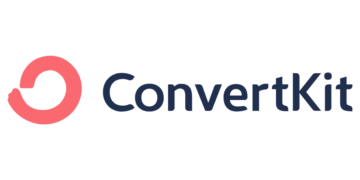No products in the cart.
Understanding Competitive Advantage: How to Identify and Leverage Your Unique Edge
Introduction to Competitive Advantage
Competitive advantage is a crucial concept in the realm of business strategy, encompassing the unique attributes that enable a firm to outperform its rivals. Identifying and leveraging this advantage is essential for organizations seeking to establish a dominant position in the marketplace. A business achieves competitive advantage when it offers greater value to its customers either through lower prices or by providing additional benefits and services that justify a higher price point. These unique strengths can stem from various factors, such as superior technology, innovative processes, brand reputation, or exceptional customer service.
Understanding the nuances of competitive advantage allows companies to differentiate themselves from competitors, thereby attracting and retaining customers. This differentiation lies at the heart of effective marketing strategies, as it helps a company communicate its unique offerings clearly. In today’s highly saturated markets, where consumers are bombarded with choices, the importance of distinguishing one’s products or services cannot be overstated. Businesses that successfully highlight their unique advantages tend to build stronger customer loyalty, leading to sustained profitability and growth.
The overall goal of this blog post is to equip readers with the knowledge necessary to identify and exploit their competitive advantages. By exploring how various elements contribute to a firm’s ability to stand out, this post aims to enhance the reader’s understanding of strategic positioning. As we delve deeper into the various types of competitive advantage and methods for leveraging them, it is vital for business leaders and marketers to remain attuned to their unique strengths and how these can be applied to foster long-term success.
Types of Competitive Advantage
There are several distinct categories of competitive advantage that businesses can pursue to establish their unique positioning in the market. Understanding these types can assist organizations in refining their strategies and maximizing their potential. The three primary types of competitive advantages are cost leadership, differentiation, and focus strategies.
Cost leadership is a strategy where a company aims to become the lowest-cost producer in its industry. This might involve optimizing operations, reducing production costs, and streamlining supply chains. A notable example of a company employing cost leadership is Walmart. By leveraging economies of scale and adopting an efficient logistics system, Walmart manages to keep prices low, attracting a vast customer base and ensuring a significant market share. Such advantages are crucial in price-sensitive industries, as they allow for greater flexibility in responding to market changes.
On the other hand, differentiation focuses on providing unique offerings that are perceived as superior by consumers, thus allowing businesses to command higher prices. Apple Inc. exemplifies this approach, with its innovative products and premium branding. Through distinctive design, advanced technology, and a strong ecosystem of services, Apple creates a compelling value proposition. Companies that successfully implement differentiation strategies cultivate customer loyalty and can often mitigate the effects of price competition, enhancing their long-term viability.
Lastly, focus strategies involve narrowing the competitive scope to serve a particular market segment more effectively than competitors. Firms employing this advantage can either pursue cost focus or differentiation focus. For instance, Rolls-Royce targets the luxury automotive market with a focus on high-quality craftsmanship and bespoke services. By concentrating efforts on a specific niche, businesses can develop specialized knowledge and enhance customer relationships, solidifying their competitive advantage in the chosen segment.
Understanding Your Unique Value Proposition
A company’s unique value proposition (UVP) is essential for establishing a competitive advantage in the marketplace. It encapsulates what makes a business distinctive, enabling it to attract and retain customers effectively. To identify a company’s UVP, it is crucial first to conduct a thorough analysis of its offerings. This involves detailing the products or services provided and assessing their features, quality, and benefits. Companies must ask themselves what they are offering that is not available or is vastly improved in comparison to competitors.
Next, understanding customer needs plays a pivotal role in determining a compelling UVP. Engaging potential customers through surveys, interviews, or focus groups can yield valuable insights into their preferences, pain points, and buying motivations. By aligning the features of your offerings with customer needs and desires, businesses can craft a value proposition that speaks directly to their target audience, making it more attractive and relevant. This alignment not only raises awareness but also influences purchasing decisions, thus contributing to creating a sustainable competitive advantage.
Additionally, analyzing the competitive landscape is vital. Companies must assess their direct competitors to understand what they provide and how they position themselves in the market. This evaluation should include an examination of competitors’ strengths and weaknesses, as well as gaps that may exist within their offerings. Identifying these gaps allows businesses to leverage their unique features, thereby ensuring that their UVP stands out. By synthesizing insights gained from product evaluation, customer feedback, and competitive analysis, organizations can hone in on what sets them apart, creating a distinct advantage in a crowded market. Ultimately, a clear and compelling UVP not only drives marketing efforts but also fortifies customer loyalty and long-term business success.
Market Research and Competitive Analysis
To successfully identify and leverage a competitive advantage, businesses must engage in comprehensive market research and competitive analysis. These processes enable organizations to systematically gather and interpret data regarding their industry, competitors, and target market. Through this understanding, businesses can pinpoint key opportunities and threats that inform strategic decision-making. One effective approach to conducting a competitive analysis is the use of SWOT analysis, which evaluates an organization’s internal strengths and weaknesses alongside external opportunities and threats. By identifying distinct strengths, such as robust brand loyalty or superior technology, businesses can tailor their strategies to exploit these advantages effectively.
Moreover, employing Porter’s Five Forces framework can provide a deeper insight into industry dynamics. This model examines five pivotal forces that shape competition: the threat of new entrants, the bargaining power of suppliers, the bargaining power of customers, the threat of substitute products or services, and the intensity of existing rivalry. By analyzing these factors, businesses can better understand how to position themselves uniquely within the market. For instance, if the threat of new entrants is low, a company may focus on increasing its market share, taking advantage of limited competition to solidify its foothold and enhance profitability.
To facilitate these analyses, several tools and methodologies are available. Surveys and focus groups can yield qualitative insights, while tools such as Google Trends and industry reports assist in quantifying consumer behavior and market trends. By integrating these resources, firms can develop a comprehensive picture of their competitive landscape, thereby identifying strategic advantages to capitalize on. Ultimately, conducting thorough market research and competitive analysis is fundamental for any business seeking to discern its unique edge in an increasingly crowded marketplace.
Implementing Cost Leadership Strategies
Cost leadership is a prevalent competitive advantage strategy that businesses can adopt to solidify their position in the market. By focusing on being the lowest cost producer within their industry, companies are able to attract a larger customer base while maintaining profitability. This approach necessitates a rigorous analysis of operational costs, enabling firms to implement measures that reduce expenses without compromising quality.
One of the primary strategies for achieving cost leadership involves streamlining operations. Companies can optimize production processes by investing in automation and technology that eliminate redundancies and enhance efficiency. For example, manufacturers who adopt lean production techniques often identify wasteful practices that can be mitigated, thereby lowering operational costs significantly. This strategy has been effectively employed by organizations such as Toyota, which has implemented the Toyota Production System (TPS) to minimize waste while maximizing productivity.
Another effective method for implementing cost leadership strategies is through economies of scale. As businesses increase their production volumes, they can negotiate better rates with suppliers, thereby reducing material costs. Major retail chains like Walmart exemplify this approach, utilizing their massive purchasing power to procure goods at lower prices. This enables them to offer attractive pricing to consumers while maintaining reasonable profit margins.
Additionally, cost leadership can be achieved by optimizing supply chain management. Efficient logistics and inventory management lead to reduced costs associated with storage and transportation. Companies such as Amazon have mastered this aspect of their operations, continuously seeking new methods to enhance delivery systems and minimize expenses, further solidifying their competitive advantage.
In conclusion, implementing cost leadership strategies is pivotal for businesses seeking a competitive advantage. By reducing operational costs through improved efficiency, economies of scale, and effective supply chain management, firms can attract consumers with lower price points while ensuring quality remains uncompromised.
Differentiation Strategies to Stand Out
Differentiation serves as a vital competitive advantage, enabling businesses to establish a unique presence in the market. Companies looking to stand out must strategically implement various differentiation strategies. These strategies primarily include innovation, branding, customer service, and quality improvements.
Innovation is perhaps the most recognized pathway to achieve differentiation. Businesses can introduce new ideas, products, or services that resonate with their target audience. For instance, Apple Inc. has consistently led the industry by introducing innovative products such as the iPhone and iPad. This relentless pursuit of cutting-edge technology has allowed Apple to create a strong brand loyalty, ensuring a remarkable advantage over its competitors.
Branding also plays a crucial role in establishing differentiation. A powerful brand can evoke emotions and trust among consumers. This is evident in the case of Nike, which has successfully built a brand that symbolizes not only quality athletic wear but also inspiration and empowerment. Their consistent messaging and high-profile endorsements create a significant competitive edge that is hard for competing brands to replicate.
Customer service is another essential aspect of differentiation. Companies that provide exceptional customer experiences cultivate loyalty and trust among their clientele, setting themselves apart from competitors. For example, Zappos is renowned for its superior customer service, which has proven to be an invaluable advantage, contributing to long-term customer retention and positive word-of-mouth.
Lastly, quality improvements cannot be understated. Brands that maintain high-quality standards in their products or services can command premium prices and foster brand loyalty. Companies like Mercedes-Benz stand out within the automotive industry due to their commitment to quality and performance, securing a competitive advantage that has persisted over decades.
In conclusion, implementing effective differentiation strategies through innovation, branding, customer service, and quality improvements can significantly enhance a company’s competitive advantage. Businesses that successfully leverage these aspects can expect to achieve sustained success and recognition within their respective markets.
Niche Market Strategy: Finding Your Focus
In today’s competitive landscape, businesses are increasingly recognizing the substantial advantages of targeting niche markets. A niche market is a specific segment of a larger market, characterized by distinct preferences, needs, or identities. Focusing on these smaller, defined groups enables companies to tailor their products and services, thus creating a unique competitive advantage that broader market players may not effectively capitalize on.
Identifying opportunities within niche markets begins with thorough market research. Businesses should analyze consumer behavior, market trends, and existing competitors to uncover unmet needs or desires. This data-driven approach allows companies to pinpoint areas where they can offer specialized solutions. For example, a pet supply company may find that there is a growing demand for organic, eco-friendly pet products. By offering such products, the business can cater to environmentally conscious pet owners, establishing a strong foothold in this niche.
Once a niche opportunity is identified, developing tailored strategies becomes pivotal. This may involve customizing marketing efforts to resonate with the target demographic or enhancing product features that align with their specific interests. For instance, a small craft brewery might focus exclusively on gluten-free beers. By dedicating resources to this specialized area, the brewery can foster a loyal customer base and become the go-to brand for gluten-free choices, differentiating itself in a crowded market.
Additionally, businesses thriving in niche markets often build strong brand loyalty through their focused offerings. By aligning their products with the specific values and expectations of their target audience, they cultivate a dedicated community around their brand. Thus, the niche market strategy not only enhances visibility and engagement but also solidifies a company’s advantage in an increasingly competitive ecosystem. In conclusion, leveraging niche markets through targeted strategies can significantly enhance business success while fostering deeper connections with consumers.
Aligning Competitive Advantage with Business Strategy
To effectively leverage a competitive advantage, it is essential for businesses to align these advantages with their overarching business strategy. The integration of identified strengths into the organization’s goals, marketing methods, and operational practices creates a foundation for cohesive execution. First and foremost, an organization must clearly define its competitive advantages, which could range from a unique product offering to a superior customer service experience. Understanding these strengths allows businesses to set strategic objectives that reflect their core competencies.
Once competitive advantages are established, businesses should ensure that their marketing strategies resonate with these attributes. For instance, if a company prides itself on delivering superior quality products, marketing efforts should emphasize this benefit to attract target customers. By doing so, the organization can differentiate itself in the marketplace, effectively communicating its unique value proposition. Incorporating these distinct advantages into the branding strategy not only enhances visibility but also builds trust with potential customers.
Furthermore, operational practices must be designed in a manner that supports the strategic alignment with the competitive advantage. For instance, if a business identifies swift production capabilities as its competitive edge, its supply chain and logistics should reflect and enhance this strength. Implementing streamlined processes, investing in technology, and training staff to optimize these advantages are critical steps in executing operational strategies that are in line with the overall business objectives. This symmetry ensures that every aspect of the organization works towards enhancing and maintaining the competitive advantage.
In conclusion, aligning competitive advantage with business strategy is not merely beneficial; it is essential. By integrating advantages within organizational goals, marketing approaches, and operational practices, companies can create a cohesive and effective framework that maximizes their potential in a competitive landscape.
Conclusion: Sustaining Your Competitive Advantage
As we conclude this exploration into the concept of competitive advantage, it becomes evident that maintaining a unique edge in a constantly evolving market is both an art and a science. The primary takeaways center around the importance of identifying what differentiates your organization from competitors, while also recognizing that these advantages are not static. Continuous evaluation and adaptation are essential in ensuring that your strategic interests resonate with market demands and consumer preferences.
Organizations must adopt a proactive stance, regularly assessing the landscape in which they operate. This involves not only understanding competitors but also gaining insights into emerging trends, changes in customer behavior, and advances in technology that could potentially disrupt existing advantages. To sustain a competitive edge, businesses should foster a culture of innovation and flexibility, encouraging teams to challenge the status quo and explore new avenues for differentiation.
Furthermore, communication and collaboration are critical in leveraging competitive advantages effectively. Engaging with stakeholders—be it customers, employees, or partners—can unveil valuable perspectives that inform strategic decisions. It may also help in identifying gaps within the market, presenting opportunities to further enhance your unique standing. Prioritizing customer feedback ensures that your organization not only stays relevant but leads within its industry.
Ultimately, the journey of sustaining competitive advantage requires discipline and consistent effort. By embracing a mindset geared toward continuous improvement and adaptation, businesses stand a better chance of not only surviving but excelling in a competitive marketplace. As organizations reflect on the insights shared throughout this article, it is imperative that actionable strategies are implemented to harness and protect their distinctive advantages effectively.






















![A Comprehensive Review of [Course/Product/Experience Name] 22 man in gray shirt sitting on black chair](https://theamericansidehustle.net/wp-content/uploads/2025/03/man-in-gray-shirt-sitting-on-black-chair-1-scaled.jpg)















































































